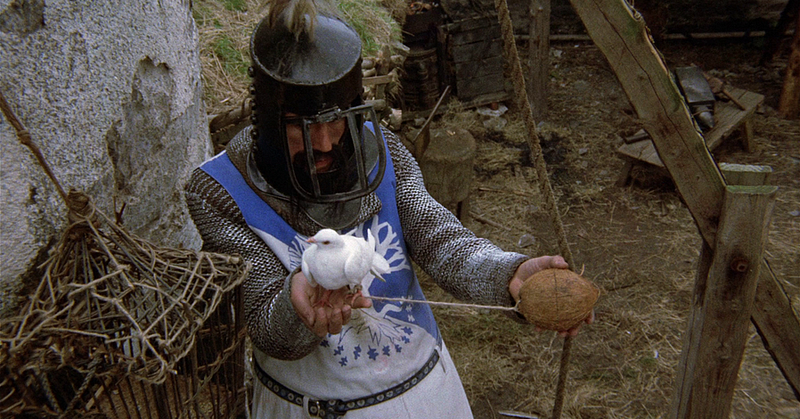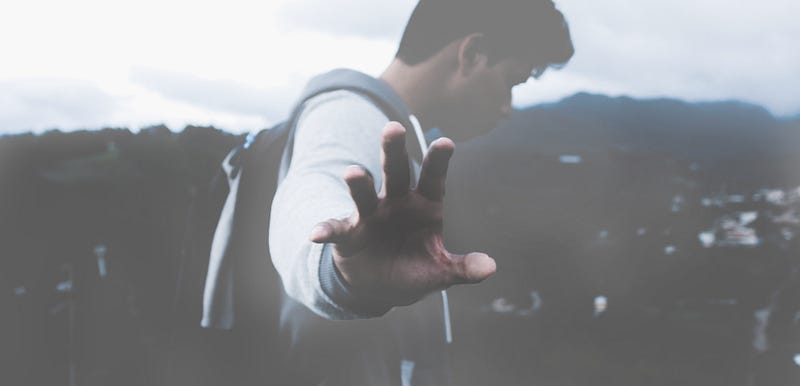Cake Weather
I only got my Nana’s recipe right once, but that didn’t stop me from tryingThe declaration that my grandmother’s coconut cake is “haunted” is the kind of statement that requires immediate expansion before any other words can be got in edgewise. Our corner of Appalachia is rich in superstition, but even among friends it’s not the kind of thing you can just lob into conversation and expect it to be left alone where it lands. Well, it’s the recipe that’s haunted, really, if you want to get specific. No, it’s just the maker of the cake that’s afflicted, not the cake itself, if you want to assuage those glancing nervously at the buffet table. Eat it. It’s fine. I didn’t bleed in it, not literally.
There’s a short version of the story you can tell and have it over with pretty quick, if cornered and compelled, which goes like this: My father’s mother, my Nana, made this cake at Christmas for as long as I can remember and for as long as he can remember before me, this towering confection of coconut and pineapple and fluffy spun meringue, and in the last year of her life she tried to teach the other women in the family how to carry on with it after her time, only none of us could do it, and by “none of us could do it,” I mean “this not-at-all-difficult recipe is absolutely guaranteed to go sideways under anyone else’s control,” sometimes literally sideways, in ways that defy all available skills and science.
This recipe has been haunted since it left her hands. On the afternoon of what would be her last Christmas Eve, Nana half-sat on the couch in my parents’ living room, dispensing explicit instructions to her daughter-in-law through the open kitchen door, and half an hour later one of the layers literally exploded all over the inside of the oven, which shouldn’t have even been chemically possible, but we were all there, we all saw, we all hooted with laughter, only mildly tinged with hysteria, as we scraped the blackened bits into a dustpan.
It was the last time that iteration of my family was all together at the same time. I wasn’t there in February, when Nana died. I had a scholarship to study in Europe that semester, and she wouldn’t be there when I got back, and I knew it and she knew I knew. So a couple weeks after the great Christmas cake explosion, I knelt by her bed and held her knotted hands and kissed her cheeks. When I pulled away, I saw where my own tears had fallen on them. A month after classes started, I got the call.
Our family tree is old but not rich, thick with coal miners and schoolteachers, but Nana gave my father a check for a couple thousand dollars after I boarded my plane and told him to keep me out in the world as long as I could make that money last. When school let out, I did the collegiate thing and bought a rail pass and a light-frame backpack and wrote my first ballet in a window seat on a train speeding through the Black Forest and didn’t come home until after midsummer. When I finally wound my way back to Tennessee, another inheritance was waiting for me: Nana had written the coconut cake recipe for me in her beautiful longhand on a torn-off sheet of spiral notebook paper. I pressed it in a plastic sleeve and put it in my mother’s recipe binder for safekeeping.
It’s not even a difficult recipe is the maddening thing. Any child capable of separating eggs can make a white cake; they’re fiddly but not unreasonable. It’s the frosting that you know going in might be the death of you: The tricky seven-minute method is called for, whipping sugar and corn syrup and egg whites and cream of tartar in a double boiler until it goes fluffy, then glossy, and takes on a consistency of sculptable marshmallow. Any number of things can go wrong here. You can undercook your egg whites and the mixture will collapse and slide off the sides of the cake. You can overbeat the mixture and it will go grainy before it’s even off the stove. You can, and will, lose control of either the hand holding the mixer or the hand holding the pan of boiling water and fling molten sugar at your own face and your mother’s wallpaper. Welder’s gear would not be out of place here.
W
hen my father was young, the Christmas coconut cake was a lavish thing—one can of crushed pineapple and three packets of frozen coconut lending a taste of extravagance to a kitchen table in rural Appalachia. For me at that age, the cake took on a different talismanic cast, representing the kind of winter I’d never seen. There’s almost never snow where I grew up, or none that will stick. But there was what my grandmother called “cake weather,” clear and cold and dry. In cake weather, she’d put the whole thing out on its glass stand on the porch, uncovered, to freeze semisolid overnight, and I’d run out to stand for as long as I could bear the cold and stare over it at the moon, watch the beams play off the tiny frozen coconut flakes, and pretend it was a hilltop covered in drifts big enough to sled on. My white Christmas.
It’s that weather I miss the most in the intervening years of trying to recreate those nights. We don’t get cake weather anymore. Christmas dawns 55 degrees and rainy, sure as snow at the North Pole. There’s something wrong with the earth. The layers come out of the oven flat as pancakes. This recipe is a taproot, and I don’t have that many of them to begin with. The frosting melts overnight and oozes all the way off the cake stand. Our family is small and getting smaller every year, and our holiday traditions shrink as our ranks dwindle, and against that I’ve somehow set my responsibility for dessert as a blow against this creeping sensation that the habitable world is contracting and leaving nothing but scorched hillsides and empty creek beds where it pulls back from the edges, and the cake won’t come out right. It’s worked exactly once, in more than a decade of trying, just enough to keep me chasing it, just enough to know it’s both possible and probably out of my reach, again.
In desperation one year, I dove into the recipe drawer in my mother’s kitchen for the handwritten original, because maybe it had been so long that I’d just forgotten some crucial step. Scanning the page, I realized for the first time, doing some quick math, that it had been written under the influence of palliative medicine. To follow the recipe exactly as Nana had written it would require the equivalent of three boxed cake mixes and would make a cake twice as high as the tallest she ever made. I’m on my own. I can’t make anything be like it was and neither can anybody else is the problem. It’s not a hard line to trace.
A
ll this forms a backdrop to last December, 15 years after Nana’s death, when I find myself rattling around my silent childhood home, coming down with the flu that’s already put both my parents in bed, freshly out of a job and fleeing a disintegrating marriage and thinking about the planet baking itself to death every time I shut my eyes to sleep. I can’t remember the last time it felt like cake weather outside. We’re not even doing Christmas dinner; the extended family are staying clear for fear of our plague germs. But it’s Christmas Eve, and I pull out the cake pans on muscle memory alone, not weighing the significance of it but going through the motions anyway, measuring without conscious thought and sifting while staring out the window over the sink.
And the finished cakes won’t come out of the pans. This particular dessert-based dead end has somehow never happened to me before, but it’s perfectly in line with our tradition of boneheadedly elementary cake debacles; I’d have trusted my five-year-old niece to grease and flour the pans herself, if she were here. It’s pitch-dark outside, but I can hear rain spatter against the windows as I scrape two layers out onto a cutting board, abandon the third entirely, and run upstairs to shower and change for church.
Midnight mass is the only religious tradition I’ve held onto as an adult. The cathedral in downtown Knoxville is slate-floored and freezing and chokingly enthusiastic in its use of incense, and it has the intended effect. I burst out of the red doors to the sidewalk arm in arm with my best friend from college, heady from the smoke and the release from solemnity, both of us trying to cram our shoulders into my evening coat because she left hers in the car, running breathlessly across the street to the parking lot, heels dodging the puddles in the pavement.
It’s well after midnight and getting colder, and somewhere along the way home, I start to confront the notion that this cake wasn’t given to me for me. I think about everything I’m letting it stand for, and instead of brushing it away as ridiculousness, I wonder for the first time if this outsized significance isn’t the point. If I might have been handed the recipe because Nana knew I’d never let it go. If she saw something in me that told her pain would always drive me forward. But that leads me to think about what she would actually do, really truly, if she were here. I almost choke from laughing, because she’d start by asking what, exactly, I thought I was doing, even thinking of trying to whip boiled frosting in this humidity.
Back at the house, I throw an apron over my church dress and arrange the remnants of the first two cake layers on a plate to form some semblance of a circle, flip the third layer out of its pan and notice it has somehow baked at a tilt. Of course it has. I start pulling down boxes of cream cheese and butter and powdered sugar, and by the time everything cold has time to soften, the kitchen is clean and all the lights in the house are out except the electric candles in the windows that my mother burns all night, heedless of fire-safety warnings, all through Advent. I put a blanket over her, asleep in a chair in the next room, and kick off my shoes.
I have a lifelong loathing of cream cheese frosting, but at 2 a.m. on Christmas morning, it makes a respectably edible spackling paste, slathered thickly between the layers, gluing the sponge scraps in place and forming a moat to prevent the crushed pineapple from oozing through the cracks in the cake. I’m pressing frozen flaked coconut — it has to be flaked, not shredded, or it won’t look like snow — up the sides, rubbing it between the palms of both hands so it cascades in little drifts over the top. And it’s done, with those flicks of the wrist; the ritual’s complete, and I’m wiping down the counters and fastening a domed lid over the cake plate to guard against moisture and marauding possums, and I’m trying to get the door to the back porch open with one foot without dropping the whole thing, because wouldn’t that just be a fitting end to this year, and when the door opens I almost drop it anyway as a biting gust of wind blows my hair straight back. I must have frozen for a full minute, framed in the kitchen light, staring out into the dark in disbelief. I swear to you, my jaw fell down.








